TLC Plumbing Blog
Latest Articles & Tips from the Pros

Plumbing
How to replace your toilet flapper
So, you’ve got a leaky toilet. Toilet flapper leaks are some of the most common and sneaky leaks you can…

Plumbing
The best way to find out if your toilet is leaking
Toilet leaks are sneaky! They can go unnoticed for a very long time, unless you get hit with an unusually…

Air Conditioning
Which Swamp Cooler Pads Are the Best?
There are many types of swamp cooler pads: Aspen pads, Celdek pads, Seeley pads, and then those blue foam things…

Electrical
Take a Load Off: 3 Easy Ways to Avoid Overloaded Circuits
Need to take a load off? Your electrical system does, too. Overloaded electrical circuits are a common problem for many…

Plumbing
Avoid Septic Tank Problems with These 10 Easy Tips
Is your septic system out of sight, out of mind? Hey, no judgment. Why would you be thinking about it?…

Air Conditioning
Is My Rusty Swamp Cooler a Problem?
You may have noticed rust and corrosion on your standard metal swamp cooler. Swamp cooler rust is a common problem…

Heating
Furnace Energy Efficiency Tips
As the chill of winter approaches, ensuring that your home’s furnace operates at peak energy efficiency becomes essential. Not only…

Air Conditioning
What is the best swamp cooler?
Swamp coolers are popular in dry, arid climates like New Mexico because they’re cost-effective and eco-friendly. But what are the…

Press Releases
TLC Scores More Than 100 New Journeyman Licenses In 2022
TLC is excited to announce that in the Year 2022, more than 60 technicians became licensed Journeyman, together earning more…

Plumbing
Top 7 Shower Faucet Leak Questions
A leaking shower faucet might sound like a simple, easy fix. What many homeowners don’t know it that repairing or…

Plumbing
Top 5 Faucet Repair Questions
Faucet drips and leaks are common plumbing problems for homeowners. TLC plumber Shannon answers the top five questions about faucet…

Energy Efficiency
Why is my gas bill so high?
If your natural gas cost shot through the roof recently, you might be wondering if your furnace is to blame.…
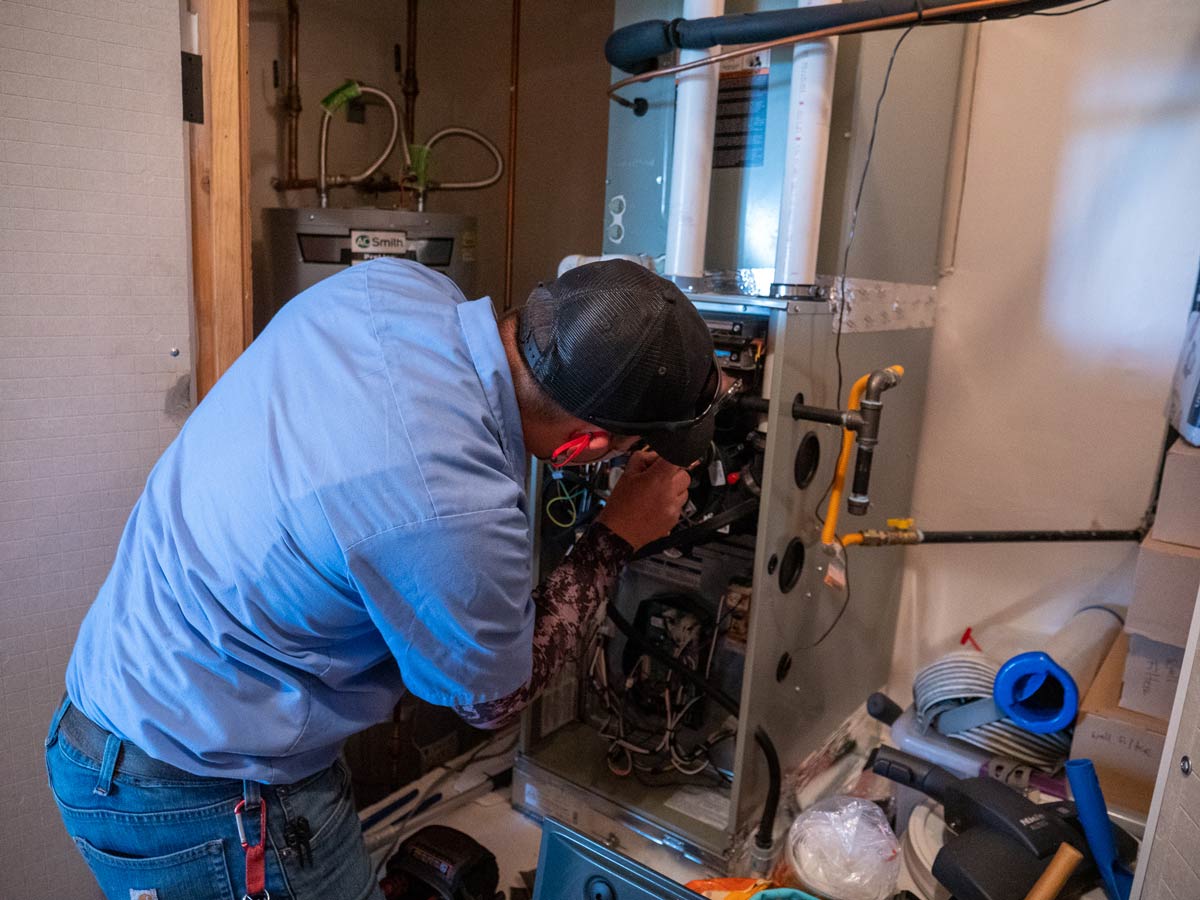
Heating
How Does A Furnace Work?
Furnaces are the most common heat source for homes in New Mexico. It’s important to know how your furnace works…

Press Releases
TLC Plumbing Voted Best Places To Work
No excerpt…

Air Conditioning
What is a Whole House Humidifier?
New Mexico has a dry climate (yes, we’re stating the obvious). Many New Mexico residents prefer it that way, but…

Air Conditioning
Top 5 Things You Need to Know About Your Home
Every homeowner needs to know these five things about their house. It will make service calls go smoother and might…

Air Conditioning
10 Frequently Asked Questions About Refrigerated Air
Summertime in New Mexico brings bright sunshine, toasty temperatures, and wonderings about refrigerated air and how to stay cool. You…

Commercial
How do backflow preventers work?
Backflow preventers systems are designed to keep harmful contaminants from getting into the municipal water supply. These systems are required…

Air Conditioning
When is the Best Time to Start Using my Swamp Cooler?
Chico Apachito, Your HVAC Expert Chico has lived his whole life in New Mexico. He grew up in Alamo on…
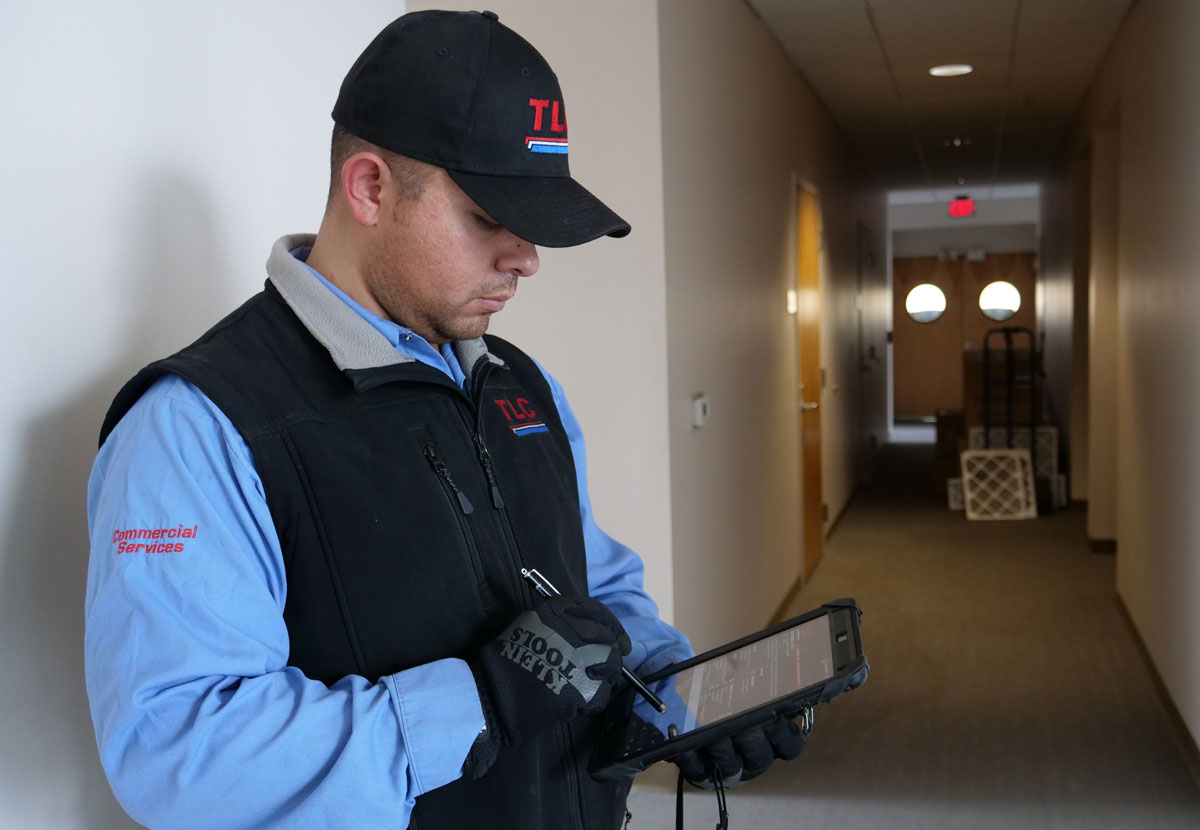
Commercial
Why you should get an electrical inspection for your business
Electrical system inspections can prevent unexpected power failures or other electrical problems that can impact your business.…

Furnaces
How Much Does A Furnace Repair Cost In Albuquerque?
Having issues with your furnace? Think it may be time to call in professional help? If so, you’re probably asking…

Press Releases
TLC Plumbing Voted Best Plumbing Company in ABQ
No excerpt…

Commercial
12 Ways to improve heating and cooling efficiency for your business
It’s no secret that the more efficient your HVAC system, the more you get out of your heating and cooling…

Community
We will play again
TLC Partners with Local Sports Association to Encourage Kids to Stay Motivated During the Pandemic…

Air Conditioning
Why Is My AC Blowing Hot Air? A New Mexico Tech Answers
Is your AC blowing hot air? That’s the last thing you want on a hot summer day. But no sweat!…

Air Conditioning
Top 4 Summer Tips for Homeowners
We’re about halfway through the summer! What should you be thinking about when it comes to your home? We asked…

Air Conditioning
How Much Does it Cost to Install a Central AC in New Mexico?
If you’re in the market for a replacement AC, the first question on your mind is probably, “How much will…

Commercial
Improving Indoor Air Quality in Your Business
As everyone has begun to deal with the “new normal” brought about by the many changes as a result of…

Commercial
What Business Owners Need to Know About Wire Theft in New Mexico
Wire theft is a common problem for business owners in New Mexico. When the copper wire in your electrical system…

Air Conditioning
How Much Does an AC Repair Cost in New Mexico?
That’s a tough question to answer. It really all depends on what’s wrong with your AC system— and believe us,…

Air Conditioning
Should I Get a Swamp Cooler or Refrigerated Air?
Should I Get a Swamp Cooler or Refrigerated Air? Choosing between a swamp cooler and refrigerated air isn’t an easy…

Air Conditioning
4 Spring Refrigerated Air Conditioning Tips
Spring is right around the corner. Even though New Mexico weather is unpredictable, there’s no doubt it’s getting warmer. Cooling…

Air Conditioning
5 Spring Swamp Cooler Tips
Spring is right around the corner. Even though New Mexico weather is unpredictable, there’s no doubt it’s getting warmer. Cooling…

Heating
Cody’s End of Heating Season Checklist
Nobody wants to pay for furnace repairs right before spring hits. That’s why we asked Cody to give us a…
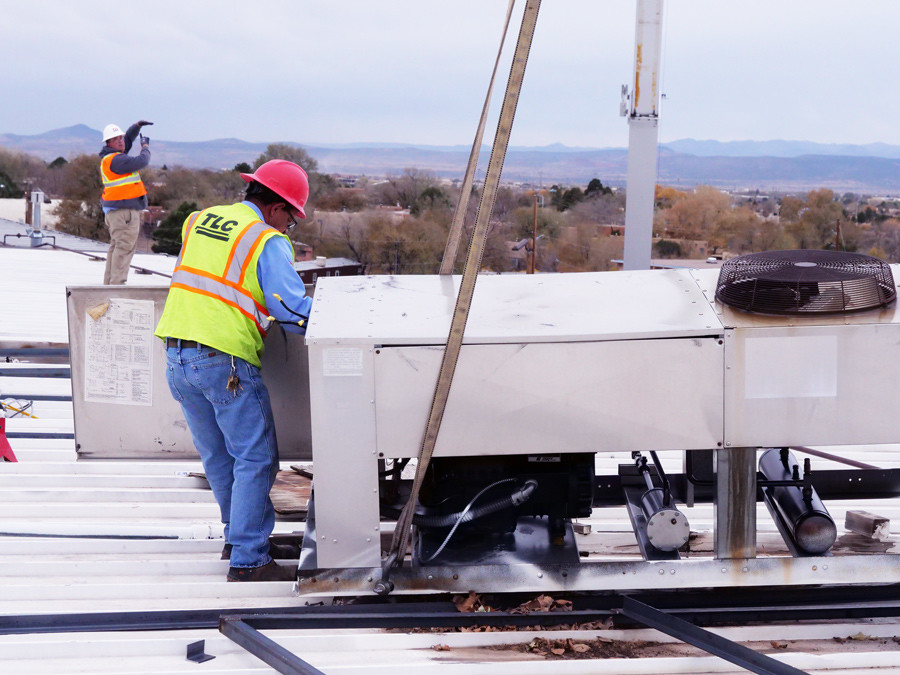
Air Conditioning
Older Air Conditioner? R22 Refrigerant Phase Out Information
Updated on 12/15/19 to reflect changes in EPA regulations. R22 refrigerant is being phased out, here’s what that means for…

Drains
Rich’s Plumbing & Drains Tips
It has been said that knowledge is power. That’s especially true when it comes to the plumbing in your home.…

Drains
Mike’s Tips for Keeping Your Drains Clear
In light of everything going on in our world today, many of us are working and caring for our children…

FAQ
Why is my Furnace Making Knocking Sounds?
You start your furnace up on a cold morning and… What is that? It sounds like a house-elf is trying…

Drains
Why is my Washing Machine Backing Up?
Laundry is a chore that most of us don’t enjoy because it takes a lot of time. The last thing…

Winter
Keanu’s Winterizing Tips for Heating and Cooling
Winter is coming, and even though New Mexico stays relatively mild, it still drops below freezing. It’s important to make…

Commercial
Preventive Maintenance for Commercial Properties
Understanding the Return on Investment for Your Business Preventive maintenance tends to be one of those things that get pushed…

Plumbing
Top 4 Signs You Need to Replace Your Water Heater
Have you ever wondered if something’s wrong with your water heater, but you didn’t know how to tell? Here are…

Remodel
Top Closet Remodel Ideas
Every space is unique, with its own special storage needs and challenges. Whether you have a large walk-in closet or…

Remodel
Trendy Pantry Remodel Ideas
The pantry and the kitchen work together to bring the magic of food to your table! A dose of creativity…
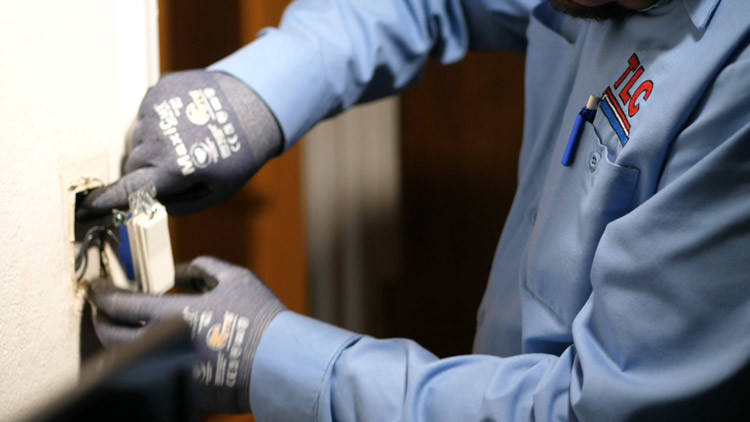
Electrical
Do You Have Aluminum Wiring? Why You Should Get an Electrical Inspection
If you’re a homeowner in Albuquerque, you’ve probably heard about aluminum wiring. How do you know if you have it?…

Plumbing
How to Avoid These Costly Plumbing Problems
Calling the plumber isn’t something most of us enjoy doing. When you have a plumbing problem, it is usually unexpected.…

Air Conditioning
What is a Duct Balancing Service?
Why Are Some Rooms in My Home Hot or Cold? Is there a room in your home that just doesn’t…

Electrical
When should I call an electrician?
It’s really easy to forget how dangerous electricity is. We use it for almost everything we do, and it makes…

Electrical
Why you need an annual electrical inspection
All of our homes are run by an invisible power that most of us take for granted: electricity. It’s easy…

Plumbing
Mistakes You Make Before You Call a Plumber
Some of us are handy people. Many of us are not, but those of you who are good with tools…

Remodel
6 Kitchen Remodel Trends That Won’t Go Out of Style
You know your kitchen needs a new look. It’s time for it to join the 21st Century, but where do…

Air Conditioning
5 Ways to Keep Your Air Ducts Clean Longer
Ducts are an important part of many heating and cooling systems. Refrigerated air, furnaces, and swamp coolers have of air…

Plumbing
How to Prevent Plumbing Problems from High Water Pressure
It is every homeowner’s nightmare. You come home from vacation or a long day at work to find a flood…

Air Conditioning
How a Swamp Cooler Thermostat can Make Your Home More Comfortable
If you have a swamp cooler in your home, you are familiar with the balancing act of keeping the house…

Heating
What should I do if I smell gas?
Natural gas is one of the most common fuels used in New Mexico homes. Many water heaters, furnaces, clothes dryers…

Plumbing
How to Avoid These Top 3 Winter Plumbing Disasters
It’s starting to get cold around here! The temperature has already dipped below freezing several times in Albuquerque (how about…

Heating
Heating System Safety Checklist
Ensure your heating system is operating safely Winter brings thoughts of cozying up by the fireplace, hot chocolate, and warm…

Home
How to Prepare for Major Home Equipment Purchases
Most of us are familiar with Murphy’s Law. Ole Murphy likes to burst onto the scene at the worst possible…

Electrical
5 Tips for a Safe Holiday Light Set-Up
It’s officially that time of year again! We’re in full swing of the holiday season, which means that people across…

Bathroom Remodeling
Top 5 Shower Remodels
If you are thinking about updating your shower, you have tons of options! Recent bathroom trends are elegant and functional.…

Safety
How Do I Know I Have a Carbon Monoxide Leak
Every day, we are exposed to carbon monoxide (CO), a gas commonly found in the air inside and outside of…

Home
What You Need to Know Before Buying a House
Buying a new home is a big commitment! It requires a lot of thought and attention to detail. Many aspiring…

Plumbing
How do I know if I need leak detection services?
A water leak in your home can be expensive and frustrating. Leaks can cause water damage and unusually high water…

Air Conditioning
How can Preventive Maintenance Save You Money?
How Can TLC’s Preventive Maintenance Agreement Save You Money? It is easy to take our home’s plumbing, electrical, heating and…

Electrical
5 Common Home Electrical Problems
Electrical issues can be frustrating and sometimes hazardous. Here are the top 5 electrical problems our electricians see. Top 5…

Drains
Why is my toilet always clogged?
A clogged toilet happens to everyone on occasion, but if it happens to you all the time, you may need…

Remodel
8 Remodel Ideas to Freshen Up Your Home
Many homeowners would agree that a remodeled room or house feels fresh and new! It is exciting to make your…

Drains
What are drain cleanouts and why do you need them?
Got a full house but no flush? Drain backups are caused by all kinds of things like roots, feminine hygiene…

Air Conditioning
What’s the Cost of Comfort?
If you are struggling to stay cool with your swamp cooler, you may be thinking about converting to refrigerated air.…

Swamp Coolers
How to Clean Swamp Cooler Pads
It’s springtime, and you’re ready for the soothing breeze from your swamp cooler. But is your cooler ready? Are the…

Air Conditioning
Difference between an Attic Fan and Whole House Fan?
Attic Fan vs Whole House Fan If your home has an attic, you are probably aware of how hot it…

Remodel
Top 10 Trendy Outdoor Space Upgrades for 2018
Outdoor space upgrades are popular and trendy this year! From furniture to architecture, the family outdoor living space is becoming…

Energy Efficiency
How Do I Save Money on my Water Bill?
Summer usually means an increase in your water bill. Much of this is normal based on outdoor watering, running the…

FAQ
How much does a tankless water heater cost?
Tankless water heaters are typically more expensive to install than standard water heaters. The cost difference is due to the process to…

FAQ
Why does my water heater smell?
Wondering why your hot water smells like rotten eggs? The most common odor problem from water heaters is a rotten…

Air Quality
Why You Need to Change Your Home’s Air Filter
When was the last time you changed the air filter in your home’s central heating and air conditioning system? Has…

Water Softener
What is the Problem with Hard Water?
What Is the Problem With Hard Water? If you are a homeowner in New Mexico, you have probably heard about…

New Mexico
Viante New Mexico – A Vision for New Mexico
TLC’s purpose has always been to improve the quality of life for our employees and the community. We have spent…

Water Softener
How to Remove Hard Water Stains
Did you know that 95% of homes in New Mexico have hard water? Our soil is rich in minerals such…

Air Quality
Why You Should Get Your Air Ducts In Your Home Cleaned
Most homeowners have no idea what goes on inside their home’s air vents. The fact is they can be littered…

Water Heaters
How Much Does a Water Heater Cost?
Cost is one of those questions that everyone has on their mind when making a large purchase – and rightfully…

Plumbing
What is a Hot Water Recirculating Pump?
Have you ever wondered why your hot water faucet gives you cold water when you first turn it on? Depending…

Water Heaters
What Size Hot Water Tank Do I Need?
According to the U.S. Department of Energy, water heaters consume 14%-25% of a home’s annual energy usage. So when it’s…

Air Quality
What is an Indoor Air Quality (IAQ) System?
You probably have insurance on your house, your car, your health, your spouse, and maybe even your pets. But what…

Water Heaters
How Does a Water Heater Work?
Being a knowledgeable homeowner empowers you to make informed decisions about your home, so it’s important to know the basics…

Bathroom Remodeling
Bathroom Remodel
As we move into 2018 and approach the Spring months, one of the big activities is to plan what to…

Press Releases
TLC Gives Back to Community
TLC Partners with Winair and Berkshire Hathaway Home Services Properties to Give Back to the Community ALBUQUERQUE, New Mexico –…

Water Heaters
Why You Should Call a Professional to Install Your Water Heater
If you’re considering installing a new water heater yourself, you may want to reconsider after you’ve been able to evaluate…

Drains
What You May Not Know About Drain Cleaners
While liquid drain cleaners can be a quick and easy fix for slow or clogged drains, the problem is that…

Furnaces
Everything You Need to Know About Your Furnace
Being a knowledgeable homeowner empowers you to make informed decisions about your home, so it’s important to know the basics…

Electrical
Electrical Fire Safety Tips
If you are still reeling from this week’s episode of This Is Us, you’re not alone. **SPOILER ALERT** if you…

Plumbing
How to Prevent a Frozen Outdoor Faucet
Winterizing your outdoor faucet, also known as a hose bib or water spigot, is a simple project. If it’s not…

Boilers
Top 11 Heating Problems
The cold weather probably has you thinking about your heater and it’s important to keep your home warm for you…

Water Heaters
When To Replace Your Water Heater
As a homeowner you know that like any appliance, water heaters break down over time and need to be replaced.…

Energy Efficiency
How to Reduce Your Winter Heating Gas Bill
For many, winter utility bills can be a pocketbook pain point. In fact, home heating is the largest energy expense…

Energy Efficiency
How to Reduce Cold Air Drafts in Your Home
Chances are you’re paying much more in utility bills during the winter months to heat your home. Here are 7…

Drains
The Difference Between Plumbing and Drain Problems
Many people may not know that there’s a difference between plumbing and drain problems and we often equate them to…
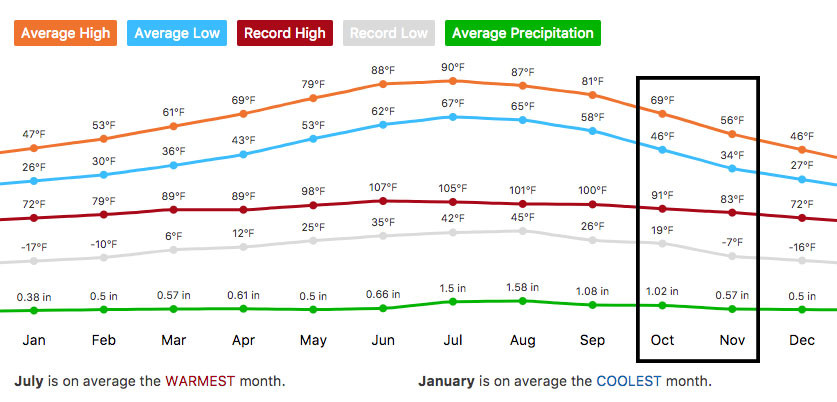
Boilers
Best Time of Year to Winterize Your Home
Fall is here! It’s the time of year when it’s tempting to run your AC during the day and your…

Water Treatment System
How to remove chlorine from your water?
Removing chlorine from your water will eliminate the taste and smell of your water. Find out how TLC can help.…

Air Quality
How to Combat Fall Allergies in New Mexico
It is the season for swollen eyes, runny noses and sneezing. If New Mexico’s second round of allergy season snuck…
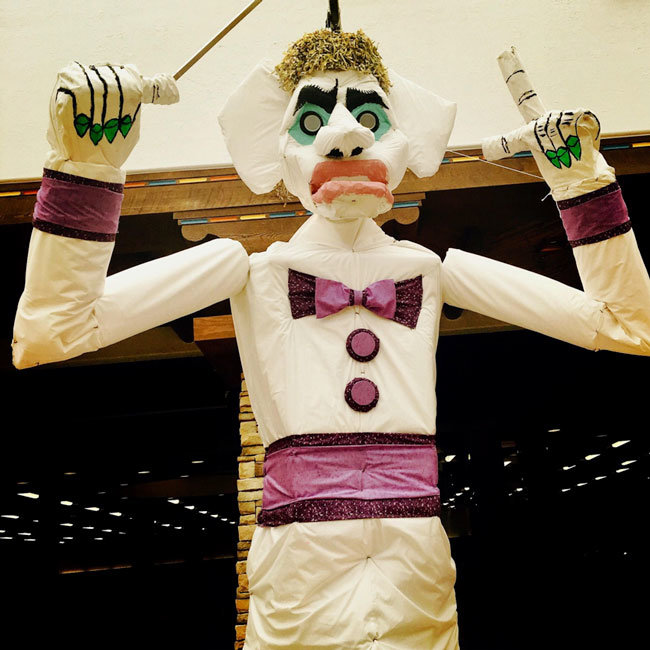
Holiday
What’s with Zozobra? A brief history on this Santa Fe tradition
If you have never heard of Zozobra many local Santa Feans describe it as, “They make this giant man-thing and…

Swamp Coolers
Why does my swamp cooler smell like fish?
As you know, your swamp cooler works by using water to moisten your swamp cooler pads, so that as the…

Swamp Coolers
Hard Water and Your Swamp Cooler
Hard water and your swamp cooler problems If you have a swamp cooler and have hard water you need to…

Holiday
4 Safety Tips for a Safe 4th of July
Celebrating our nation’s freedom with food and fireworks is fun. The 4th of July is a special time to make…

Santa Fe
Summer Activities for Kids in Santa Fe
Summer, is officially in Santa Fe and it is hot outside. Are you a few weeks into the kid’s summer break…

Air Conditioning
Air Conditioning Options in Santa Fe
You’d be hard-pressed to find a New Mexican complaining about the plethora of bright sunny days and our relatively mild…

Plumbing
Why you should shut off your water when you leave town for vacation
Why Should You Shut of Your Water When on Vacation? With the start of summer and the end of school,…

Water Heaters
Tank Vs. Tankless Water Heaters
Tank and Tankless water heaters both provide hot water But what are the pros and cons of each? More and…

Water Heaters
Tankless Water Heater Installation Process
Installing a Tankless Water Heater? We hope we’ve given you enough information in this guide to make an informed decision…

Water Heaters
Will A Tankless Water Heater Save Money?
Our technicians explain if and how a tankless water heater can save homeowners money.…

FAQ
Are Tankless Water Heaters Energy Efficient?
Are tankless water heaters energy efficient? Yes, but to understand how it impacts you, lets first explore how energy efficiency…

Air Conditioning
Understanding Home Automation Options
What is Home Automation and How does it Work? Before our smartphones became an extension of our lives it was…

Water Heaters
What is a Tankless Water Heater?
What are Tankless Water Heaters? Tankless water heaters have grown in popularity over the years. A lot of new homes…

Plumbing
Preventing Washing Machine Hoses From Bursting
When you think of home flooding problems, you might think they’re caused by broken pipes. What many homeowners do not…

Holiday
Valentine’s Day on a Budget
It is a known fact that restaurants mark up their menu prices around Mother’s Day and Valentine’s Day. They know…

Air Conditioning
Plumbing, Heating & Cooling Rebates Available For Your Home
It’s hard to believe but we are almost through the first month of the year and while many of us…

Water Softener
How does a water softener work?
Ever wonder how a water softener works? Water softeners use a process called ion exchange. Softeners use resin that is…

Furnaces
What kind of furnace should I buy?
So if you have been researching furnaces you may also be thinking what kind of furnace should I buy? There…

Furnaces
What size of furnace should you buy?
Most of the time when you are replacing your furnace it is typically replaced with the same size of unit…

Furnaces
What is the most energy efficient furnace?
The most efficient Furnace you can buy is a 98% modulating variable speed furnace. Almost every manufacturer has a variation…

Heating
Carbon monoxide dangers in your home
Carbon monoxide dangers can happen anytime in your home. However, winter definitely increases your exposure to carbon monoxide dangers. Carbon…

Water Softener
Why Choose A Kinetico Water Softener?
Why should you choose a Kinetico Water Softener? We will walk you through the things to consider when making this…

Furnaces
How do I know when it is time to replace my furnace?
When the temperature drops in New Mexico the last thing you want is your furnace to go out and your…

Plumbing
10 Ways to Prevent Frozen Pipes This Winter in New Mexico
For the most part, the temperatures have been fairly mild as we gear up for colder temperatures in New Mexico.…

Bathroom Remodeling
Modern Bathroom Remodel by TLC (7 Photos)
TLC’s Modern Bathroom Remodel Recently TLC was hired to completely remodel this master bathroom in a home built in the…
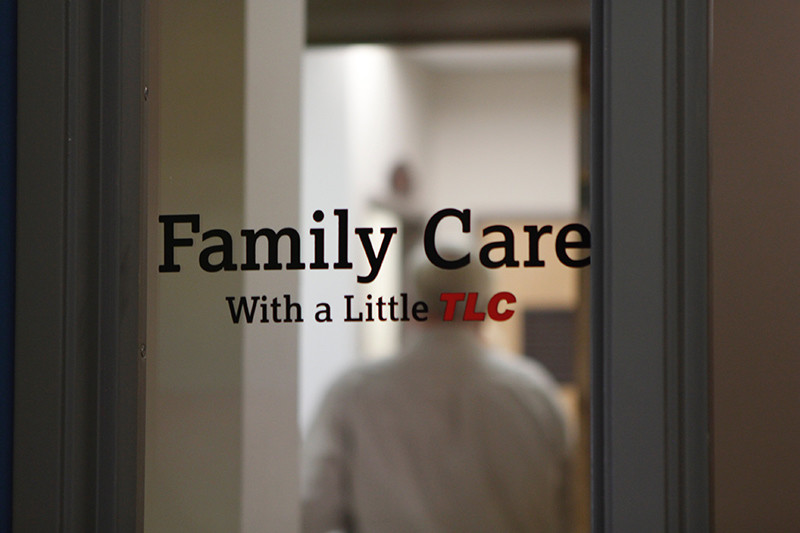
Press Releases
TLC Family Health Care Clinic
DaVita to Manage TLC Family Healthcare Clinic Facility Caters to TLC Plumbing, Heating, Cooling & Electrical Employees and Family Members…

Air Conditioning
Swamp Cooler vs. Refrigerated Air Conditioning
One of the biggest reasons most homeowners in New Mexico choose to convert to refrigerated air is temperature control. As…

Air Conditioning
How to choose an HVAC Contractor
So you’ve done your homework and are ready to convert your swamp cooler to refrigerated air. Now that you have…

Air Conditioning
What is SEER rating
What is SEER rating and what you need to know? If you have central air conditioning in your home or are…
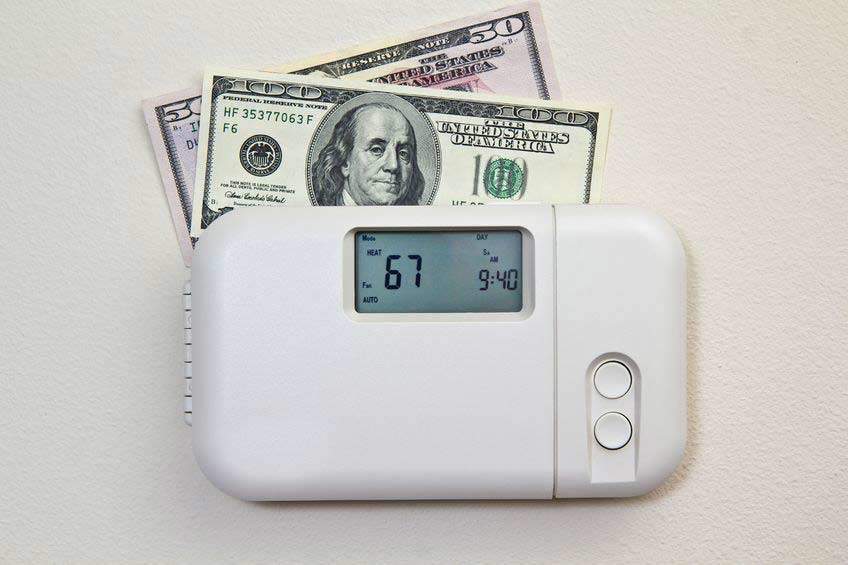
Air Conditioning
Will Energy Costs Go Up With Refrigerated Air Conditioning?
The simple answer is yes, in most cases your energy bill will rise because you will use more electricity with…

Air Conditioning
Swamp Cooler Maintenance Tips
Those hot summer temperatures are just around the corner, are you ready? We are getting closer and closer to those…

Air Conditioning
How much is it to convert to refrigerated air?
Are you dreading the hot temperatures? Worried that your swamp cooler will not be able to cool your home? If…

Drains
Plumbing Tips For Pet Lovers
It’s no secret that owning a pet can improve your life. Owning a dog lowers the chance of heart disease,…

Remodel
How to choose a professional for your remodeling project
With so many home improvement shows on TV today, it is easy to get inspired and get some great ideas…

Plumbing
How do I know if I need a new water heater?
Imagine coming home after a long, exhausting day of work to find a large puddle of water covering your floor.…

Water Softener
Top 5 Hard Water Problems
Water spots on dishes. Crusty build up on the dishwasher or around the faucets. The need to use more laundry…

Energy Efficiency
Why is my furnace running constantly?
A furnace that is running properly cycles on and off to maintain the temperature in your home. If your furnace…

Plumbing
Why is my water bill so high?
If you’ve recently received a water bill that is much higher than normal you’re probably wondering if you have a…

General
6 Things to Consider When Choosing Carpet or Laminate Flooring
When remodeling or updating your home, there are a lot of decisions to be made. Some of those decisions are…

Furnaces
How to Choose a Furnace Filter For Your Home
The cold weather hit us fast and unexpectedly this week. Which is quite common for New Mexico. One day it…

Drains
Dryer Vent Cleaning and Fire Prevention
(Editor’s Note: This post was originally published in October 2015, it has been updated to reflect current information November 2024).…

Furnaces
Why You Should Get a Professional Furnace Inspection This Fall
There are several reasons to get your furnace inspected by a professional. It isn’t just about making sure everything runs…

General
14 Things To Do To Prepare Your Home Before Your Vacation
Editor’s Note: This blog was originally posted in 2015. However, it has been updated to reflect current information. Winter usually…

Remodel
Top Bathroom Remodel Trends
If you own an older home, you may have a dated bathroom or two. Maybe you may have the peachy-pink…

Water Softener
Is Hard Water Raining on Your Day?
Here in the 505 we bask in the glow – quite literally – of blue clear skies and sunshine for…

Air Conditioning
Things To Consider Before Converting To Refrigerated Air Conditioning
Refrigerated air or central air conditioning is very comfortable and more homeowners in Albuquerque and Santa Fe are making the…

Air Conditioning
Why is my swamp cooler not working?
My struggle with cooling my home I have a confession to make, I should know more about maintaining my cooler…

General
How to stay cool in ABQ
Well, summer is definitely here and we’re working around the clock fixing air conditioners and repairing swamp coolers all over…
Drains
How to clear a slow drain
Your drain system is something that largely goes unnoticed until you have a problem, whether it be a slow drain,…

Plumbing
How to Choose A New Toilet
Choosing which toilet to purchase can be a daunting task. This Guide to choosing a toilet by our Plumbing experts…

Air Conditioning
How Do Swamp Coolers Work?
Swamp cooling or evaporative cooling, is a popular, cost effective way to cool your home here in the southwest. Swamp…

General
How do I know if I have Kitec Plumbing?
With the recent news story on KOB Channel 4 about faulty plumbing we wanted to provide you with some information,…

Plumbing
How to adjust water heater temperature
Did you know your water heater can cause burns if the temperature is too hot? How do you know if…

Air Conditioning
What is a Wall-Mounted Ductless Air Conditioner?
A wall-mounted ductless air conditioner also referred to as a mini split system or ductless mini split system is an…

Air Conditioning
Breezair Swamp Coolers Offer Superior Cooling
The summer heat is here and the temps are starting to soar! Are you worried about how well your swamp…
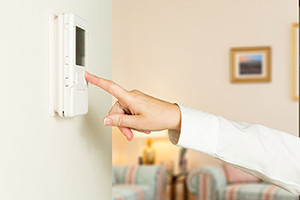
FAQ
Why Is My Thermostat Not Working?
Thermostat Problems vs. Furnace Problems It is common for furnaces or heaters to stop working and the homeowner to believe…

New Mexico
Solution to Water Pressure Issues
Albuquerque & Rio Rancho residents, especially those in Cabezon have experienced major pressure spikes. What does that mean for you…

New Mexico
How to choose a Plumber you can trust?
Here are a few tips and important bits of information when choosing a plumber.…

FAQ
Why does my furnace keep turning on and off?
Diagnosing a Furnace that Turns On and Off There are a couple of different reasons this may be happening and…

Water Heaters
7 Important Water Heater Safety Tips
Your water heater delivers hot water that can be adjusted to your comfort level. But, it requires maintenance and care…
General
Common Mistakes to Avoid when Dealing with Clogged Drains
So, you have a clogged drain in your home. With all of the products and services available today, there are…

General
Benefits of Dual Flush Toilets
Over 1/3 of the water you use in the bathroom comes from your toilet. And since bathroom water amounts to…

FAQ
What should I set my thermostat to in winter?
This is a very common question that we hear often. The answer can be different for everyone so here are…

Holiday
Steer Clear of These Holiday Plumbing Mishaps
Christmas is a busy time of year for your plumbing. From visiting relatives to elaborate meals, your drains are getting…

General
Is That Really in my Water?
If you fill your glass from the tap, you may be drinking more than just water. In Albuquerque, there are…
New Mexico
TLC Plumbing Listed Among New Mexico’s Top Private 100 Enterprises
FOR IMMEDIATE RELEASE Contact: Mindy Gonzales Phone: (505)761-5526 Email: mgonzales@tlcplumbing.com Web: tlcplumbing.com Customers, employees share in satisfaction…

General
How to Control Heating Costs With Your Thermostat
Coming home to a cold home isn’t fun, but many homeowners do it in the interest of saving money on…

Heating
Get to Know Your Heater
How well do you know your heater? There are probably more types of heating out there than you think. TLC…

Swamp Coolers
3 Common Swamp Cooler Problems
Cooler weather has finally arrived, but that doesn’t mean you should forget about your swamp cooler. You’re going to need…
Services
Why It’s a Good Time to Upgrade Your Water Heater
Is your water heater gurgling or popping? Do you know how old it is? Water heater energy standards are changing.…
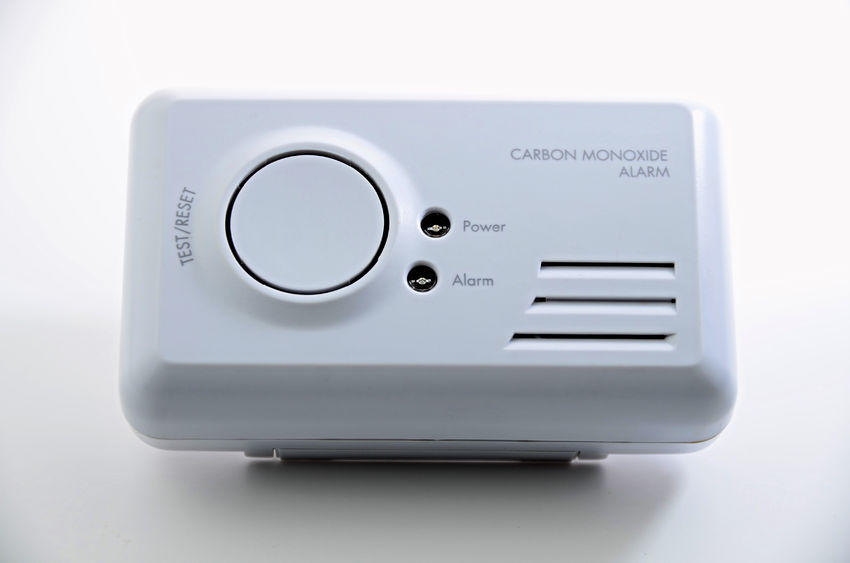
Services
Reasons You Should Get a Carbon Monoxide Detector
Every day, we live with carbon monoxide in our air, inside and outside our homes. So, why do you need…

Services
4 Reasons to Get a Furnace Tune Up
October is on our doorstep, which means it’s time to pack up the short sleeves and fire up the furnace.…
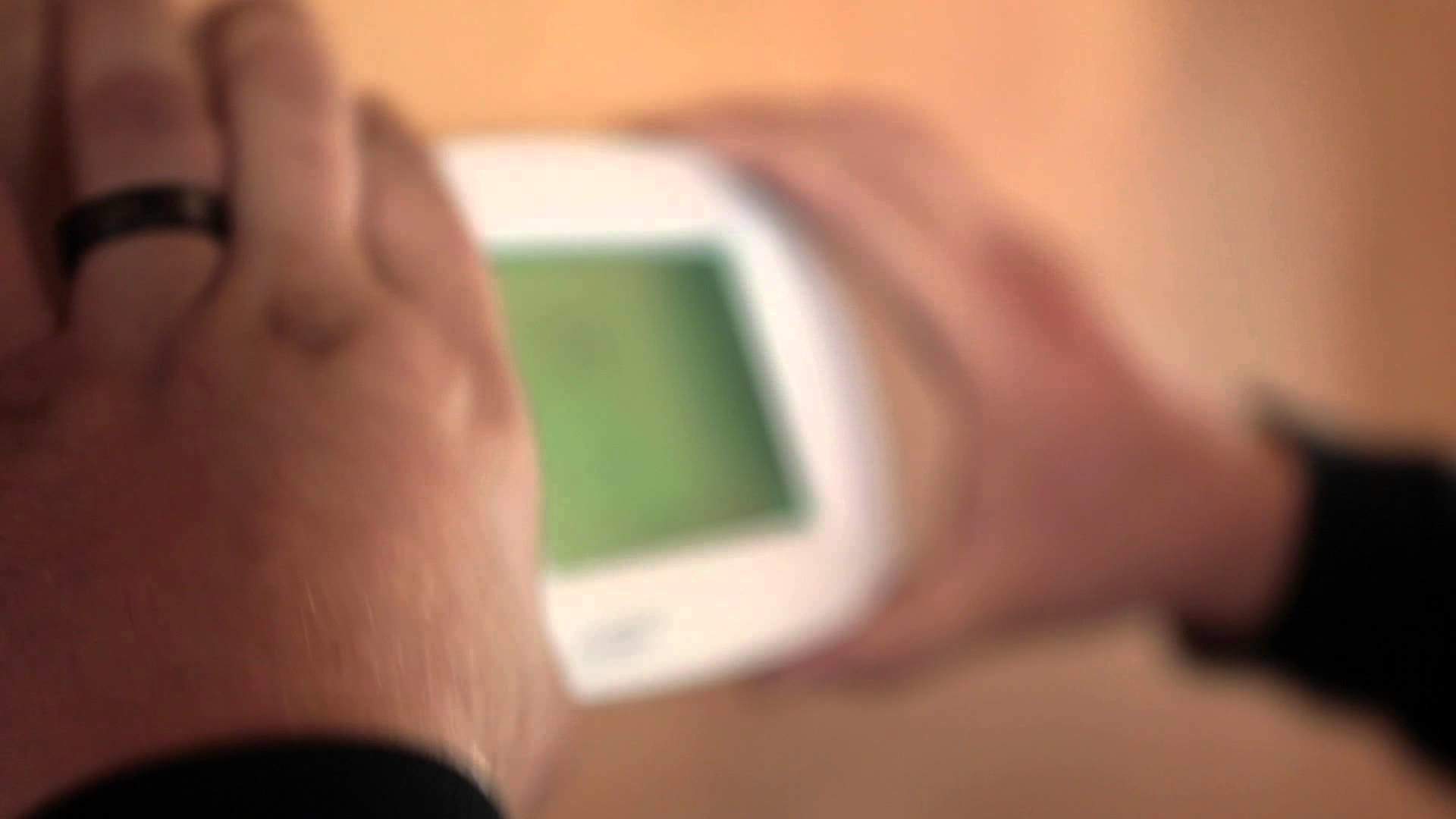
Air Conditioning
Turn Your Thermostat On and Off From Your Smartphone
Apps are awesome. From checking your bank account balance to checking your email, smartphones apps have made it convenient and…
New Mexico
TLC Best Place to Work
At TLC Plumbing, we’re committed to creating a great work environment for our employees day in and day out. Every…
Services
Save Water With Your Swamp Cooler
Compared to cities like Phoenix or Las Cruces, Albuquerque is actually somewhat temperate, thanks in part to the river and…

Air Conditioning
Deciding the Best Time to Run Your Cooler
Every family has their own schedule. Between work, school, activities, and dinner, it’s important to maintain a comfortable temperature in…

Air Conditioning
Why You Should Consider a Digital Thermostat
Summer is officially in full swing. That means the days are long, hot, and full of glorious New Mexico sunshine.…

Air Conditioning
How to Optimize Airflow in Your Home Swamp Cooler Efficiency
Good airflow is an essential component to any cooling system, but it is especially important for swamp coolers. Without proper…
General
Set Up Your Application for Success
No excerpt…

General
Why You Need a Professional to Convert to Natural Gas
For many years, propane was a practical and effective way to produce energy. But, with the cost of fuel on…

Air Conditioning
5 Reasons to Schedule Your Spring Changeover Today
Spring has finally arrived! With abundant sunshine and life blooming at every turn, a heating and cooling changeover may be…

HVAC
How Can an HVAC/R Contractor Help My Restaurant?
Anyone who runs a restaurant knows it’s a lot of work. From the drains to the appliances, restaurants need systems…

Drains
Why You Want to See Inside Your Drain Lines and Duct Work
With the development of technology, plumbers are now able to perform inspections of drain lines and duct work to diagnose…

Drains
Avoid Septic Tank Failure
Your septic system was created to give you many years of service, but like many things, it can get…
Drains
Flushable Wipes Causing Sewer Problems
Next time you decide to flush that wipe down the toilet, you may want to reconsider. Happening more often than…

Water Treatment System
Water Softeners in Albuquerque
Without notice, your family uses numerous gallons of water a day, and depending on your location in Albuquerque, chances are…
Water Heaters
All About the Water Heater
It seems easy enough – we turn on the shower and hot water comes on. But, instant hot water actually…

Air Conditioning
10 Reasons to Install Ductless Air Conditioners
When it’s time to upgrade your heating and cooling system, you may want to do more than install a new air…
General
TLC turns on the heat for Albuquerque Seniors
On November 4, TLC technicians visited the homes of 7 senior residents to turn their heaters on in preparation for…
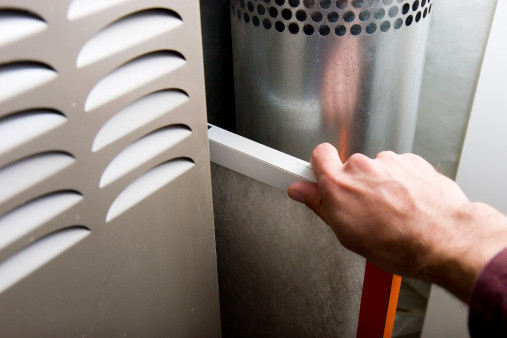
Energy Efficiency
10 Things You Might Not Know About Your Furnace
Your furnace isn’t just a hunk of metal hanging out in the garage or the hallway closet of your home;…
Plumbing
Why We Love What We Do
At TLC Plumbing, we love what we do! It’s that simple. From our workplace to our community to our customers,…
Furnaces
Forced-Air Furnace 101
Known as the most popular heating solution in Albuquerque, forced-air heating is one of the most effective ways to heat…

Energy Efficiency
Energy Efficiency Tips For Your Heating System
In autumn and winter months, your heating can use half of the energy in your home. In addition to driving…

Boilers
Is Your Heating System Ready for Winter?
Heating systems come in all shapes and sizes, but winter only comes in one variety: cold. With a commitment to…

Drinking Water System
What You Need to Know About New Mexico’s H2O
Free Water Inquiries from TLC Plumbing The water from your faucet may be drinkable, but is it pure?…

Water Treatment System
Do You Need a Water Softener?
Why Your New Mexico Home is Better with Soft Water Hard water is a common reality in New Mexico. To…

Drains
What to do when your sink is clogged
We live in the era of information, where anyone is but a type stroke away from finding answers to problems.…

Air Conditioning
Get the Best Air Quality During Fire Season
When fire season in full swing, air quality is a major concern for New Mexico homeowners. While your cooling system…

Drinking Water System
Stay Refreshed in the Heat with Kinetico
On a hot day, nothing hits the spot quite like a glass of cold water. But, what if that water…

Air Conditioning
Swamp Cooler 101: Getting Your Cooler Ready for Summer
If you’re new to New Mexico or you’ve recently moved to a home with a swamp cooler you may be…

Air Conditioning
Swamp Cooler Conversion Efficient Solution
To Convert or not to Convert? In Albuquerque, actually New Mexico in general, we’ve all grown up with the ol’…

HVAC
How to Troubleshoot Your Swamp Cooler
If you’re cooler doesn’t seem to be putting out enough air, there are a few simple things to check before…

Air Quality
Indoor Air Quality Heating & Air Conditioning
The new houses being built today are vastly different from those of yesteryear. Even in the last ten years there…
